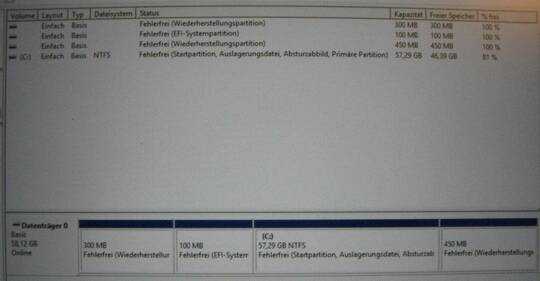1
I bought a used Tablet (Pokini Tab A8, should be identical with: Aavamobile Inari 8, Fujitsu Stylistic V535, Wortmann TERRA PAD 885 INDUSTRY, Bressner TOUCAN Mobile 8.3", TETRATAB Casepad 8 and TAROX Craftab 8.3") which runs Windows 10 on an Atom CPU. Now I want to ensure that there are no remains of the former user left on the Disk (64 GB eMMC). Usually (regarding PCs) I use UBCD to run HDAT2 to check for HPA and DCO, disable them if present and run DBAN afterwards to erase the HDD. This Tablet seems to be UEFI only so I'm not able to start UBCD from a connected USB pen drive.
When looking at the partitions in Windows I get this:
Using GParted Live two additional partitions are shown:
I also tried running hdparm with -N and --dco-identify but only got a HDIO_DRIVE_CMD(identify) failed: Invalid argument
My question (before I spend time investigating how to delete HPA and DCO on an UEFI only device): Is the possible presence of HPA and DCO limited to ATA devices like HDD and SSD? Or rather: Is an eMMC an ATA device?


This clears things up, thanks. You mentioned the NIST guidelines which recommends the use of the "eMMC Secure Erase" command for Windows Phone and Android devices. My device is neither of them but has an option "eMMC Secure Erase" in UEFI, I think I'll try that. – Simon – 2016-12-02T13:13:04.187
Embedded Flash Memory on Boards and Devices is what I assumed were relevant. – Journeyman Geek – 2016-12-02T13:58:41.087